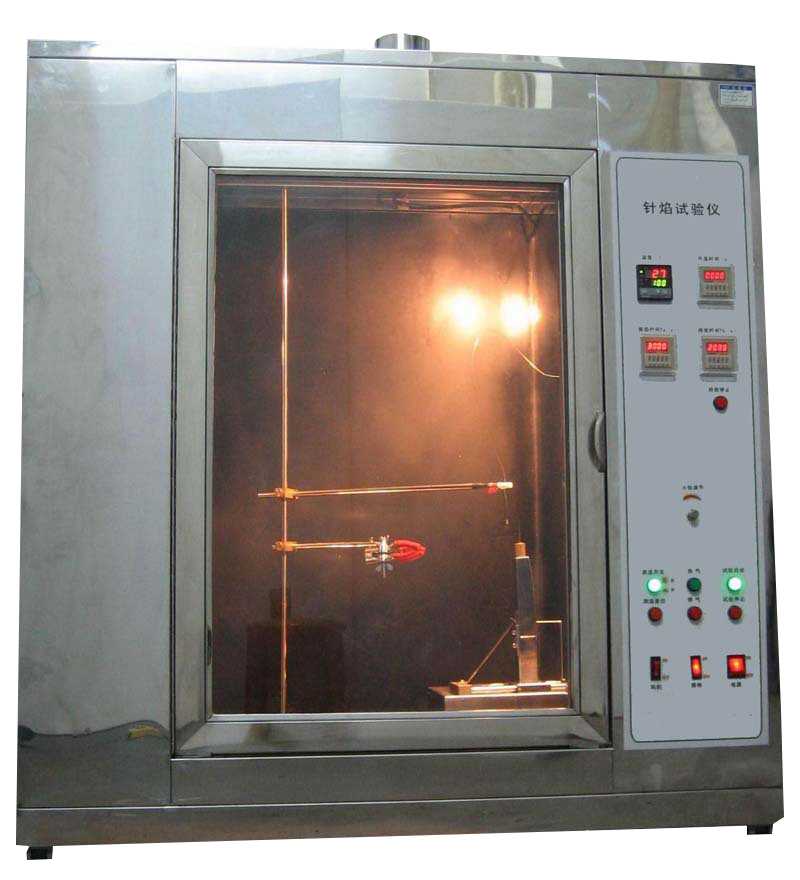
NewsInformation Center
Test method for waterproof, oil-proof and antifouling of textiles
2021/09/06
The three-proof test of textiles mainly assesses the ability of textiles to resist water, stains, or oil droplets and dirt under certain conditions. The common oil repellency test is also a kind of dirt repellency test.
1. Waterproof
Refer to AATCC 22 "Testing and Evaluation of Textile Waterproof Performance-Dip Method" to determine the dynamic water resistance of fabrics. The GB/T 4745 and ISO 4920 standard methods are basically the same as AATCC 22. The fabric sample after water and oil repellent treatment is fixed on a metal ring with a diameter of about 150 mm and placed on a fixed angle of 45°. Shelf. Quickly pour 250 mL of water from the glass funnel above the sample to ensure that the natural spraying is completed within 25-30 s. Remove the fixing ring, tap the fabric face down horizontally, observe the wetting condition of the sample surface, and evaluate its waterproof value.

2. Oil resistance
According to AATCC 118, GB/T 19977 and ISO 14419 are basically consistent with them, "Oil Discharge: Hydrocarbon Resistance Test" to determine the oil resistance of fabrics. Eight kinds of homologous solvents with gradually decreasing surface tension were used as standard liquids, and different grades of test liquids were dropped on the surface of the finished fabric, and the surface wetting condition of the fabric after 30 seconds was observed. If the final test liquid does not wet the fabric, this level is the oil resistance level of the tested fabric. Level 1 is the worst and level 8 is the best.
3. Antifouling
The standard of textile antifouling is usually referred to. The test method standard for stain resistance is GB/T 30159.1-2013 "Testing and Evaluation of Textile Antifouling Performance Part 1: Stain Resistance", which is divided into liquid staining method and Solid contamination method. The basic principle of the liquid contamination method is to add a prescribed liquid to the surface of a horizontally placed sample, observe the wetting, wicking and contact angle of the droplets on the sample surface, and evaluate the degree of resistance of the sample to liquid contamination. .
The test process is to select the first-level pressed refined oil or soy sauce as the dirt, take two samples, and place the samples flat on two layers of filter paper. Drop 0.05 mL of dirt on 3 parts of the sample. After 30 seconds, take 45 ° Observe each droplet from an angle and rank it;
The solid staining method is to fix the sample in a test tube containing the specified solid dirt, turn the test tube over to make the sample fully contact the dirt, and compare the color difference between the stained part and the uncontaminated part by changing the color with a gray card. Evaluate the degree of contamination resistance of the sample to solid dirt. The test process is to use a mixture of dust and high-pigment carbon black as the dirt. Take two samples and place the sample flatly on the sample fixing plate, which is wrapped around the cylinder body. , Then put the dirt on the bottom of the cylinder, put the test cylinder into the protective bag and put it in the tumbling box, roll 200 times, take out the sample, and blow the blower to remove the dirt rating of the sample.
If you want to know more about textile testing related knowledge, please leave us a message!
Previous: How many types of textile testing are there?
N e x t : What are the 10 must-know textile testing items?



